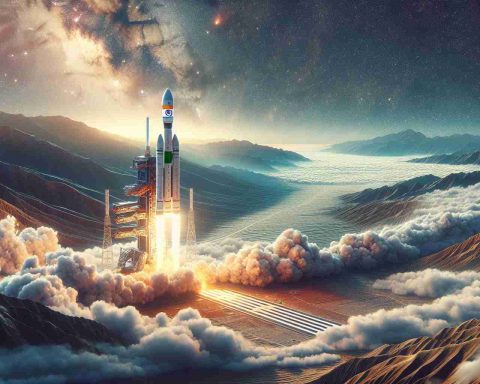New Delhi: A significant leap for India’s space endeavors was achieved on Thursday as the country successfully docked two satellites in orbit. This groundbreaking event marks a pivotal moment in India’s aspirations to establish a space station and aim for a manned mission to the Moon.
The Indian Space Research Organisation (ISRO) took to social media to celebrate this landmark achievement, emphasizing its importance in the realm of space exploration. To highlight the journey leading to this momentous occasion, ISRO released an engaging video showing the bustling mission control room, where experts closely monitored the operation.
A mission director provided insights during the live updates, detailing the procedural steps necessary for a successful docking. The satellites, named SDX-01 and SDX-02, began their final approach from a distance of three meters, executing a slow and controlled maneuver at a speed of 10 mm per second.
This docking experiment, known as SpaDeX (Space Docking Experiment), was executed flawlessly in the early hours of January 16, 2025. Each satellite weighed 220 kilograms and was launched into space on December 30, setting the stage for this significant achievement that strengthens India’s presence in the cosmic arena. The success of SpaDeX not only cements India’s growing capabilities in space technology but also propels its future missions towards a new frontier.
Expanding Horizons: India’s Leap into Space Exploration
The successful docking of satellites SDX-01 and SDX-02 marks a watershed moment for India’s ambitions in space exploration, hinting at broader societal and economic implications. As India advances its space capabilities, it stands to not only enhance its technological prowess but also to invigorate domestic industries. The burgeoning space sector could stimulate job creation, leading to a ripple effect across various fields, including research and development, manufacturing, and telecommunications.
From a cultural standpoint, India’s achievements in space foster national pride and inspire the next generation of scientists and engineers. The infusion of space education into STEM curriculums can invigorate student interest, shaping the future workforce in high-tech industries. Moreover, this achievement can act as a catalyst for international collaborations, positioning India as a pivotal player in global space policy discussions.
The environmental implications of such advancements must also be considered. While increased launches may lead to concerns about space debris and its impact on orbital ecosystems, the knowledge gleaned from these missions can aid in addressing terrestrial issues, such as climate change. Future trends suggest a focus on sustainable practices, with nations increasingly prioritizing eco-friendliness in space endeavors.
Ultimately, India’s space success has long-term significance that extends beyond the immediate technical triumphs, promising a future where space exploration enhances societal well-being, stimulates economic growth, and fosters global partnerships for collective advancement.
India Soars to New Heights: Breakthrough in Space Docking and Future Mission Aspirations
Introduction
India has made a monumental stride in its space exploration journey with the successful docking of two satellites, SDX-01 and SDX-02, in orbit. This event, spearheaded by the Indian Space Research Organisation (ISRO), is a critical step towards building India’s own space station and sets the groundwork for potential manned missions to the Moon.
Overview of the SpaDeX Mission
The docking, conducted as part of the Space Docking Experiment (SpaDeX), occurred on January 16, 2025, and involved a meticulous approach sequence. The mission director elaborated on the procedural requirements, showcasing the precision required for the maneuver. The satellites, each weighing 220 kilograms, had launched just weeks earlier, on December 30, consolidating India’s advancing capabilities in space technology.
Significance of the Achievement
This docking experiment not only demonstrates India’s growing expertise in orbital mechanics but also enhances its position in the global space community. It paves the way for future missions that could include the establishment of a permanent space station, echoing similar ventures by leading space nations.
Features of the SpaDeX Docking System
– Precision Docking Technology: The satellites approached each other at a controlled speed of 10 mm per second, emphasizing the advanced navigation and control technologies utilized.
– Real-Time Monitoring: The mission control room, teeming with experts, provided live updates, showcasing the collaborative effort behind this high-stakes operation.
Use Cases and Future Applications
The success of SpaDeX carries significant implications for various future projects, including:
1. Building a Space Station: A successful docking system is foundational for assembling and maintaining a space station, enabling long-duration human occupancy in space.
2. Manned Lunar Missions: ISRO’s aspirations for a human presence on the Moon will greatly benefit from the technologies and experiences gleaned from the SpaDeX experiment.
Pros and Cons
# Pros:
– Enhanced Capabilities: Strengthens India’s national capabilities in complex space operations.
– Strategic Collaboration: Opens avenues for international partnerships in future space ventures.
– Technological Advancement: Contributes to the development of indigenous technologies crucial for deeper space exploration.
# Cons:
– Resource Intensive: Space missions require significant investment and resources, which can be limiting.
– Technological Challenges: The complexity of such missions may pose risks and require continuous advancements in technology.
Trends and Insights
India’s space program is rapidly evolving, with increasing investments in technology and infrastructure aimed at expanding its exploratory boundaries. The success of SpaDeX is expected to attract global attention and could lead to collaborative missions with other space-faring nations.
Conclusion
ISRO’s successful docking of SDX-01 and SDX-02 is not merely a technical achievement; it is a landmark moment for India’s aspirations in the arena of space exploration. As the country looks forward to building a space station and venturing towards the Moon, the future of Indian aerospace technology appears bright and full of potential.
For more insights on ISRO’s innovative endeavors, visit ISRO’s official website.



















